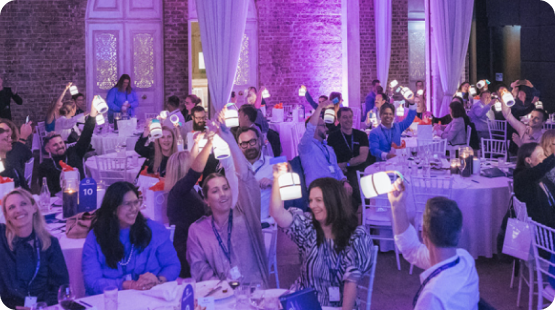From Inflated Expectations to Disillusionment: The Skills Transformation Journey
Blog Post Body
Table of Contents
Talk to a Work Strategist
See the Work Operating System in action and start re-engineering work for AI.
Subscribe to our newsletter
The latest insights on re-engineering work for AI
We've all heard the buzz around skills transformations. As HR leaders, we’ve jumped in headfirst, driven by the need to show real impact. We've hit the "Peak of Inflated Expectations," but now reality is setting in, and we’re sliding into the "Trough of Disillusionment."
This journey, inspired by Gartner’s Hype Cycle, shows just how tough this challenge is – it’s not something HR can tackle alone. For this transformation to work, the whole business needs to step up and make it a core part of their strategy. Without this crucial support, we risk falling short.
Does anyone else feel like 'skills-first' is the new 'employee engagement'?
There's a growing feeling that "skills-first" might be heading down the same path as "employee engagement." Both initiatives started with big dreams and promises to revolutionize the workplace. There was a time when "employee engagement" was the buzzword, and we all thought it would solve all our workplace woes. But without full support from the powers that be and proper integration, it didn't quite hit the mark.
Now, "skills-first" is at risk of becoming the same. We need more than just excitement and good intentions. We need commitment from the entire organization to truly embed these changes into our culture and operations. If we treat skills transformation as just another HR trend without backing it up with real actions and support from leadership, we're setting ourselves up for disappointment and worst case, failure.
The missing piece of the transformation puzzle
But here's the thing... focusing solely on skills is missing a crucial piece of the puzzle - The "Transformation Puzzle," if you will. We need to understand the work and tasks that actually require these skills. This is where work ontology comes into play. It's not enough to develop skills without knowing how they fit into the bigger picture of the work that needs to be done.
The world is going through an enormous paradigm shift in how we organize around jobs and employees. Not only are employers adapting to new ways of working since the pandemic, but they also must integrate rapidly evolving technologies like AI into their workforce strategies. As work evolves into a mix of jobs, projects, and gigs with flex, contract workers and digital workers coming into the fold, companies must have the tools to unbundle work and optimize task allocation.
Reejig's Work Ontology™ helps break down traditional job architectures into components like skills required, tasks, requirements, and time allocated. This approach supports redistributing work to the most efficient and innovative resources, embracing emerging technologies, and allowing employees to do meaningful work.
By understanding the work that needs to be done and having a common language for work, we bridge the disconnect between HR and the business.
This is precisely why we need all hands on deck - HR cannot do it alone.
Consider why your skills transformation isn’t working
Now ask yourself: "Why isn't our skills transformation hitting the mark?" Take a hard look at how involved your business leaders are! Are they genuinely backing it and pushing for change, or is it just seen as another HR project? If they’re not fully engaged, then there's your answer. Case closed. Mystery solved.
Successful transformation demands buy-in from the top down. Leaders need to be actively participating, not just giving lip service. They need to dedicate time and energy to unpacking what actual jobs and tasks their functions require. This goes beyond a job description - it’s about understanding the day-to-day tasks and the nitty-gritty details of what needs to get done. Leaders must champion the change, integrate it into business strategies, and lead by example.
You can’t just slap on a “skills transformation” label and hope for the best. It’s a deliberate exercise in aligning those skills with the specific work that needs to get done. Think about it: if you don’t know what tasks need to be accomplished, how can you ensure you have the right skills in place?
I’ve been to the skills-based peak, and I’m here to tell you, skills aren’t it
Skills are essential, but they’re not the whole picture. A successful transformation includes continuous learning, an adaptive culture, and a strong commitment from leadership. We can’t just focus on skills and forget the broader context. Skills are just one piece of the puzzle; we also need to think about what comes next and how to build a sustainable, future-proof workforce. Understanding the specific work that needs to be accomplished is key to aligning our skills initiatives with business objectives.
TLDR; For our skills transformations to succeed, we need everyone on board, from top to bottom.
Sign up for our full email newsletter to get weekly resources, exclusive extras, and more delivered straight to your inbox. 📩
Talk to a Work Strategist
See the Work Operating System in action and start re-engineering work for AI.
Subscribe to our newsletter
The latest insights on re-engineering work for AI


